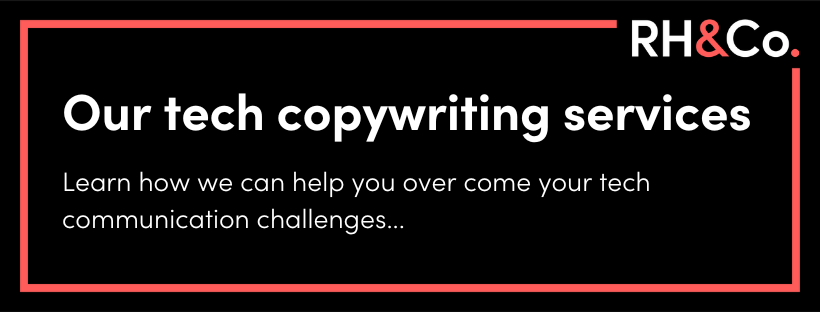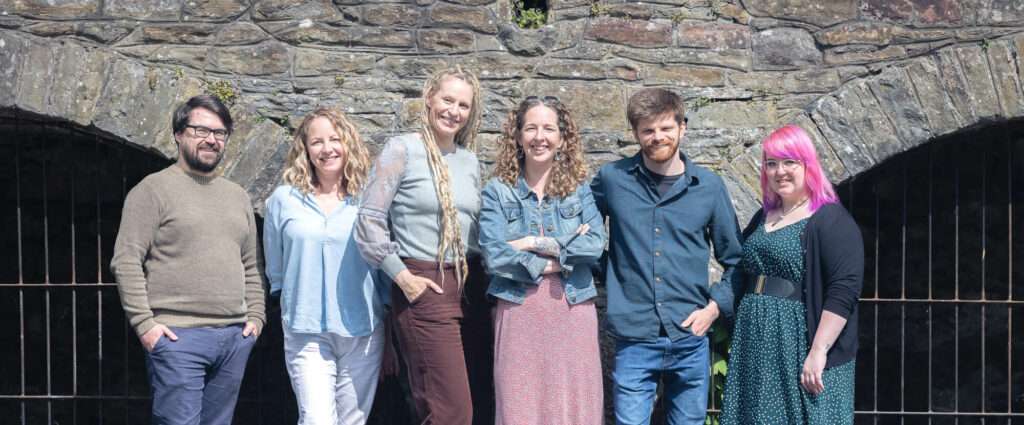

When tomorrow is out-of-date: how to market in fast-moving industries
Technology is defined as the application of scientific knowledge for practical purposes. And in some fields, all those aspects are constantly on the move – the knowledge, the application of it, and the purpose behind it.
You might be in an emerging field like generative AI, an established industry like martech that’s constantly competing for the next edge, or a reactive industry like cybersecurity that’s constantly evolving to meet the next threat. Either way, you’ll probably be selling the future, commenting on what’s next, and trying to keep up with everything that changed yesterday.
It’s a challenge to market in such fast-moving industries. How do you present a consistent brand when you need to constantly evolve? How much do you say about your product roadmap when it’s always shifting? And how do you convince the world you’re still one step ahead of your competitors?
TL:DR
- Challenge 01: The industry is changing
- Challenge 02: Your products are changing
- Challenge 03: Your customers are changing
Challenge 01: The industry is changing
You wake up, and suddenly aluminium-sulphur batteries exist. New neural-implants are viable. And, although plenty of companies haven’t finished the build of their last closed loop payment system, open loop solutions are everywhere.
Many of the technology industries move as a kaleidoscope moves. It’s part of what makes these sectors so interesting to work in, and it’s also what makes life so challenging for marketers.
As Deloitte wrote in their 2023 Tech Trends report: “Before the economic landscape of the metaverse changes from fluid to concrete, pioneers will need to make their moves.” That is just as applicable to the fields of XR, embedded finance or haptics as it is for the metaverse – both on a business level and a brand level.
It’s not always about changing your product pipeline today. Sometimes it’s enough to show you’re aware you might need to change it tomorrow. If you’re a mathematical forecasting company, for instance, your brand content might need to address quantum computing. Or if you’re in open payments, you might need to be talking about future government regulation and how your SaaS platform will be ready for it.
The danger is that in an attempt to seem ahead of the curve, technology companies can overreach. Everyone wants to talk about the next big thing so they can catch the attention of those scanning the horizon. But you’ll want to stay within the boundaries of your expertise, otherwise customers with a better understanding of the emerging technology will see through you.
Solution: Talk to your subject matter experts
This is an area where siloed marketers are a bad idea (though to be honest, are siloed marketers ever a good idea?). Marketers are often the ones with their finger on the pulse but they rarely understand the circulatory system of veins and arteries beneath that pulse.
If marketers can work with the experts in their company, and extract their perspective on an emerging subject, they’re much more likely to talk to an audience with the right level of depth, nuance and cautious optimism. In our experience, data scientists, CTOs, and product leads are also more aware of when they shouldn’t comment on a topic at all.

Challenge 02: Your products are changing
You’re used to selling a journey to a destination you haven’t finished laying the rail tracks to. The build might not be locked in, there’s still end-to-end testing to be done, but you have to market what you’re building next – because everyone else is too, and you need to show that you’re ahead.
Of course, this status quo comes with its fair share of high profile vapourware products. Whether it’s Google Stadia simply promoting features they were never able to release, or the extreme 80’s case of Ovation’s office suite programme, which was advertised with a fake demo to try and gain the funding the product team finally needed to finish it (they never did).
Overpromising isn’t an option, but neither is under promising. For a number of our clients it’s a constant balancing act: knowing when to say a feature is ‘coming soon’, using the future-facing words investors want to hear (did somebody say blockchain?), and holding fire when a feature just isn’t ready to be talked about.
Solution: Sell the future but don’t speculate
Marketers here need to keep two hands on two pulses – your audience’s needs, and your product team’s ongoing struggle to build, test and fix according to schedule.
There’s one senior product marketer we work with who is particularly skilled at doing this. As a result they’re very adept at knowing the nuances of when, how and at what frequency to advertise a feature or benefit. At times, we’ve seen them put the hard brake on the company’s content or advertising, and there have been occasions where they’ve suggested winding down the selling of a product altogether.
In our conversations, it’s been important for us to listen to their input but it’s been equally important not to hit delete on a claim unless we had to. Often it’s been a matter of suggesting alternatives and tweaks that position the messaging exactly where it needs to be. That way the brand could still sell the essence of what they’re building towards without slipping into speculation.

Challenge 03: Your customers are changing
Tech is affected more by trends than almost any other industry, with perhaps the exception of fashion. The difference is that in the fashion industry, at least historically, people make impulse, almost-instant purchases. Whereas in the technology industries, product purchases can take months, or even years to complete.
This means that the B2B technology you’re selling when you complete a sale is never exactly the same product as when you first pitched. You need to catch your addressable market’s attention now but you need to anticipate what their wants and needs will be next year. Or possibly the year after, if you’re selling to an enterprise.
A different but related issue: your audience might shift entirely. 73% of technology startups pivot to a different market over time, and even if you stay the course in a single sector, almost inevitably the size and maturity of organisations you’ll be targeting will increase.
Sometimes this change needs to happen suddenly for tactical reasons. One brand we work with has recently switched from just targeting new challenger companies, to targeting long established organisations in the energy market, based purely on new activity of these companies’ sales reps.
Solution: Keep evolving your brand intentionally
Recently, in preparation for a brand voice and messaging workshop with a scaleup, we combed through several documents that detailed the company’s customer personas and brand strategy. Even though they were created in the last 9 months, we were told they were already out of date.
No brand can remain static, and in fast-moving technology industries, you’ve got to be even quicker on your toes. As we explored in our roundtable discussion on how much should brand evolve, your messaging needs to hit the sweet spot between brand consistency and brand relevance. And to do this, you need to be constantly revising your customer personas and reevaluating your brand strategy to match.
Sometimes this is about crafting vertical-specific messaging that speaks directly to the up-to-the-minute ambitions of specific target markets. But you’ll also want to step back occasionally to reevaluate your overall brand and content strategy to make sure it’s going to resonate with your audience as a whole.
The trick is to be intentional. We’ve seen fast-moving technology companies evolve their brands unintentionally – which is a natural outcome of hiring, scaling and trying to swim in bigger ponds.
Maybe the company starts using the same tech-normative language as their new peers, or possibly their values fade into the background as they focus on selling their technology’s bottom line benefits. At this point they often need intentional brand engineering.
In case you missed it, check out the first blog in our series on marketing challenges in the technology industry: Clear as nanocrystal: How to market complex technology.
Back to hompeage









